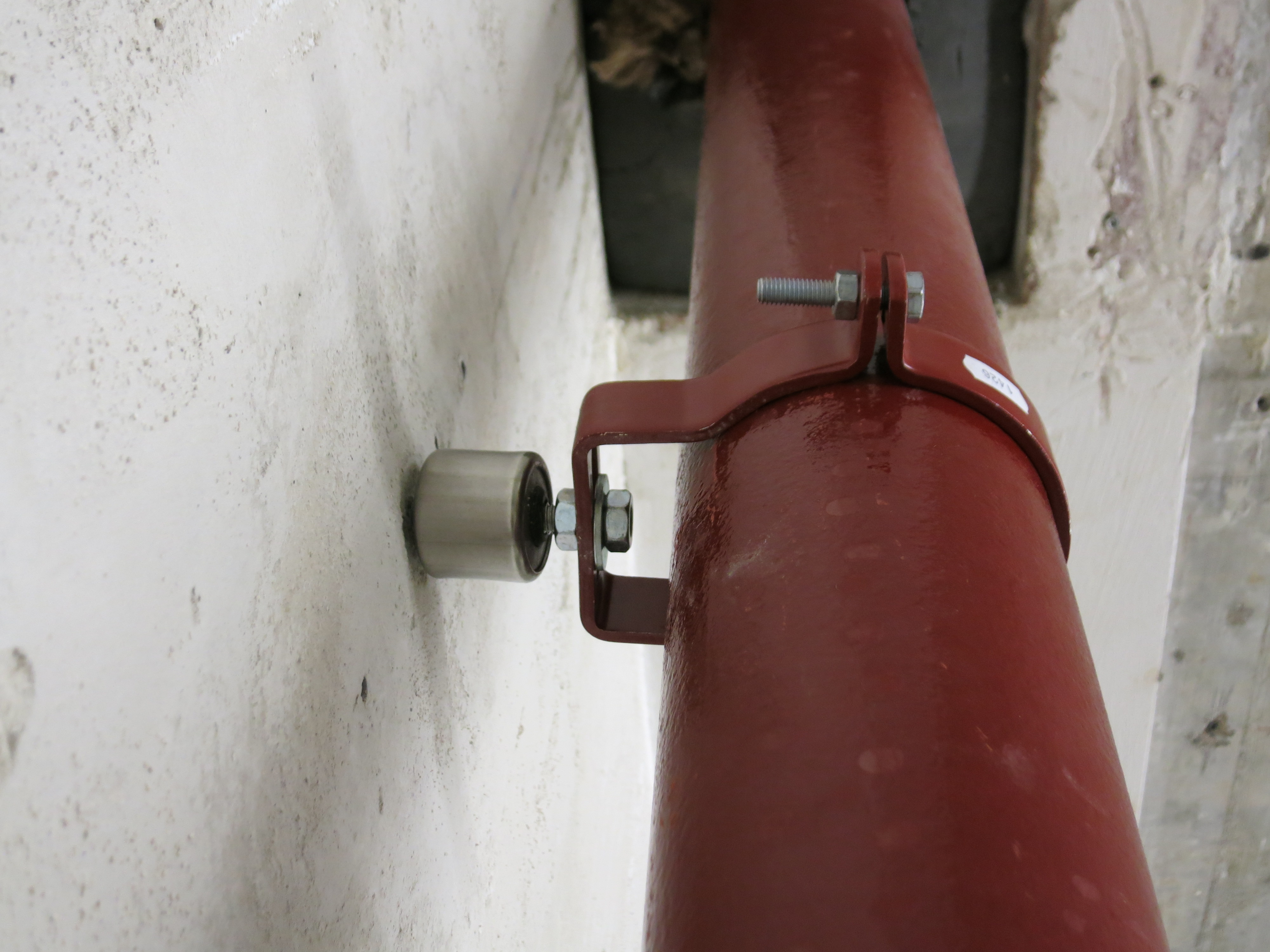ACOUSTIC PERFORMANCE
It is desirable to reduce the ambient noise in any structure and especially so in hospitals, hotels, schools etc. As noted in Annexe F of BS EN 877, cast iron has excellent sound insulating properties due to its material density.
In July 2017, Hargreaves Foundry employed the Fraunhofer Institute for Building Physics (IBP) in Stuttgart to conduct these tests on the Halifax Soil & Drain systems on our behalf. These tests were undertaken as specified in EN14366 and were also related to IBP’s own guidelines as released in June 2016. The intrinsic properties of cast iron set the bar high above some other materials, particularly HDPE and other plastics. EN 14366 sets out a standard testing system for the acoustic properties of waste water pipes and provides a framework under which comparisons can be made with other tests made under the same conditions. Whilst the material properties of cast iron reduce the amplitude of the noise generated by waste water, it does not completely insulate against any noise generated. What noise is not deadened by the material density is transmitted via one of two mediums:
Airborne Noise
This is sound waves transmitted by the air surrounding the pipe system and would be of particular importance in areas where the pipework is unshrouded such as car parks and shopping centres. The principle form of acoustic insulation in these instances would be the cast iron itself.
Structure-borne noise
This is sound waves transmitted through the solid structure which supports the pipe system and is the easiest to reduce. The testing undertaken at Fraunhofer IBP focussed on the reduction of structure-borne noises by a variety of methods. It should be noted that structure-borne vibrations have the greatest potential for disturbing the occupants of a building as they can be transmitted to any location in the building. Therefore, if noise reduction is a major consideration within a project, acoustic insulation of drainage and waste water systems should be considered.

Airborne
As could probably be predicted, the readings recorded for airborne noise transmissions were not generally reliant on the type of bracket used and tended to increase in amplitude with an increase in flow. As a point of reference, please see the comparative scale below.
| Flow Rate | Bismat | Coated Adjustable Bracket | Coated Adjustable Bracket with Dampner | Bismat Bracket with Dampner* |
|---|---|---|---|---|
| 0.5 l/s | 14 | 21 | <10 | <10 |
| 1.0 l/s | 17 | 24 | 13 | <10 |
| 2.0 l/s | 21 | 27 | 17 | 13 |
| 4.0 l/s | 25 | 31 | 21 | 18 |
*Must be used in conjunction with stack support brackets
Structure-borne
Due to the way that structure-borne noise is transmitted, the brackets have a greater impact upon the amplitude. The data table and graph here show a marked difference between the different bracket options tested and indicated that using the dampener (Part No. HSD6703) in conjunction with the Bismat bracket has an obvious impact on the amount of noise transmitted. It is important to note however that in order to achieve the greatest change, the bracket must be installed correctly as specified by Hargreaves Foundry. Failure to implement the installation correctly can result in sound levels varying by up to 15 dB(A).
Cast iron removes the need for expensive acoustic insulation to be placed around waste water systems within a structure, simplifying the whole construction process and reducing costs.
Noise Comparison Table
| Noise (db) | Example References |
|---|---|
| 10 | regular breathing |
| 20 | whisper, rustling leaves |
| 30 | quiet rural area |
| 40 | library, bird calls, lowest limit of urban ambient sounds |
| 50 | quiet suburb, conversation at home |



